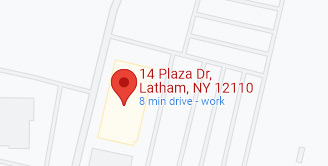Impacts of the US-China Tariff Pause on Propane Prices

Lake Geneva Reset
An elegant 18th century Swiss villa overlooking Lake Geneva seemed to provide a calming backdrop for U.S. and Chinese negotiators last weekend, and they reached a 90-day tariffs pause that sent oil and propane prices higher.
Before the meeting, there was doom and gloom. Deflation concerns in China and recession concerns in the U.S. had experts forecasting that WTI crude oil prices could drop towards $50.00/bbl., the lowest level in over 4 years. Even Saudi Arabian officials were saying that “they [could] endure a sustained period of depressed prices.”
Rigs Count
$50.00/bbl. is widely considered a “break-even” number for most U.S. shale plays, maybe $40.00/bbl. for the Permian Basin in west Texas. But that’s not very profitable and probably not sustainable.
The rule of thumb is that shale spending drops by roughly 5% for every $5.00/bbl. drop in crude oil prices.
Rig counts are another indication of production growth or decline. So, when Baker Hughes reported that there were fewer oil & natural gas rigs last week, and 4% less than a year ago, the downward trend seemed likely to continue.
Well, all that has changed, for now.
Tariff Concerns Not Concerning for U.S. Propane Exports
Regarding propane prices, the theory was that high Chinese tariffs on imported propane would back everything up to U.S. export terminals, creating an oversupply situation. And maybe propane prices could move lower.
But that didn’t happen.
Company executives for the largest U.S. propane exporters are saying that they’re not seeing any disruptions to shipments or loading activity, and their export terminals are largely sold out for the balance of 2025. Supporting these statements, LPG exports averaged over 78 million gallons per day this year, about 5% higher than last year.
The Skinny
The fact that the U.S. and China agreed to a 90-day tariff pause so quickly implies that both sides are aware of the economic impact of a trade war and are willing to work together to prevent one from happening.
Recessionary concerns may be less likely for now, but it’s also unlikely that we’ll see a sustained period of much lower propane prices anytime soon. Every dip seems to be short-lived, followed by a bounce.
So, if you plan to offer price protection plans for your customers soon, our advice would be to back-to-back your sales program with fixed-price purchases from Ray Energy.
Get Stephen's insights on propane delivered to your inbox every month. Sign up for our monthly newsletter here.
For more frequent updates and industry news, join us on LinkedIn.
NOTE: The views and opinions expressed herein are solely those of the author, unless attributed to a third-party source, and do not necessarily reflect the views of Ray Energy Corp, its affiliates, or its employees. The information set forth herein has been obtained or derived from sources believed by the author to be reliable. However, the author does not make any representation or warranty, express or implied, as to the information’s accuracy or completeness, nor does the author recommend that the attached information serve as the basis of any buying decision and it has been provided to you solely for informational purposes.
© 2011-2025 Ray Energy Corp. All rights reserved. Any reproduction, representation, adaptation, translation, and/or transformation, in whole or in part by whatsoever process, of this site or of one or several of its components, is forbidden without the express written authorization from Ray Energy Corp.
